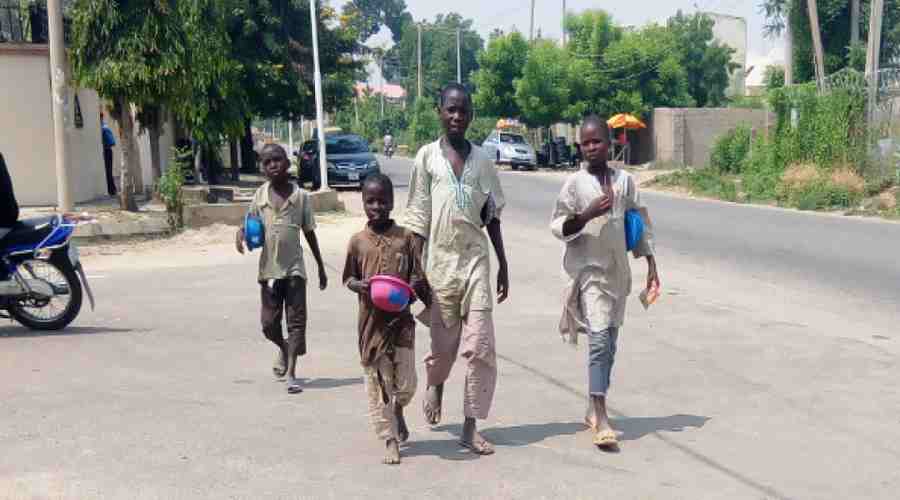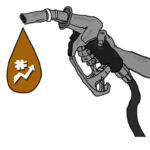In a daring escape sometime around 2017, a frustrated, sick, and tired North Korean soldier drove through the de-militarized zone that separates his country from South Korea, racing towards the border. By the time the authorities realised that he was on an escape mission, they sent his fellow soldiers after him. Just as they were about to catch up with him, he jumped out of his vehicle and dashed for the borderline. At that point, they opened fire on him, succeeding in hitting him with a couple of bullets but seeing he had managed to cross the border, they quickly withdrew and halted the chase.
Meanwhile, across the border, South Korean soldiers, keeping watch over the zone, quickly picked up the wounded escapee and rushed him to a hospital. After examining him, doctors found, among other things, that he had parasitic worms in his intestines, the type that had been eliminated in the rich South Korea several years earlier. That type of worm, they further explained, is associated with human waste.
The border between the two Koreas and the differences in quality of life on both sides of the fence, are part of examples of the contradictions between poverty and prosperity that Daron Acemoglu and James A. Robinson point out in their book: Why Nations Fall: Origins of Power, Prosperity and Poverty.
From their research that covered 15 years, they distilled a truth that has universal applicability. Looking at the deep differences between two halves of what used to be the same country, they noted that it was not culture, or geography, or even ignorance that accounted for the tenfold gap between them as of the late 1990s. “Countries differ in their economic success because of their different institutions, the rules influencing how the economy works, and the incentives that motivate the people,” the authors of Why Nations Fall declare.
- North in self-imposed educational backwardness – Adamu
- INEC ad hoc staff protest over unpaid allowances in Anambra
The two Koreas were a creation of the world powers in 1945 at the end of World War 2, following the surrender of Japan, the administrator of Korea. Because Korea was collapsing, it had to be divided into North and South, along the 38th parallel. But the difference that ensued between the resultant nations had nothing to do with their physical location, whether in the north or south. The difference only came from the system of government that was instituted on both sides. While the South was administered by the United States, the North was given to the Soviet Union to administer. That was all. That was the beginning of the difference that has endured until today.
On the northern side, which was administered by the Soviet Union on the principle of socialism, there were no property rights as individuals were not allowed to own property. “Private property was outlawed, and markets were banned. Freedoms were curtailed not only in the marketplace but in every sphere of North Koreans’ lives…” according to the authors. Industrial production failed to take off, just as agricultural productivity collapsed. The lack of private property killed the drive to invest or to put up the energy to raise productivity.
Is there any wonder then that this country has remained poor, ravaged by disease, lack, famine, and backwardness? At the time the two men wrote their seminal book, they declared that the standard of life in North Korea was, unfortunately, comparable to those in a typical sub-Saharan African country, but a tenth of the average standard of living in Portugal and Spain.
In the South, just across the line, things were and have remained different. The economy was organised on a market system that permitted private enterprise and entrepreneurship. Economic institutions paved the way for investment and trade, as the political leaders encouraged and invested in education, which provided a highly educated workforce for South Korean companies.
Again, is there any wonder that the South Korean economy has progressed astronomically, rising to the position of the 10th largest economy in terms of gross domestic product?
South Korea is also Asia’s fourth-largest economy after China, Japan, and India. It has produced powerful industrial giants, including the Chaebols, that dominate its industrial landscape, with their products in automobiles, electronics, and telecommunications reaching all parts of the world, including Nigeria. When you read about Hyundai, LG, Samsung, and others, you will appreciate the power of a state giving direction to economic players.
A similar contrast exists, according to Acemoglu and Robinson, in the city of Nogales. Like the line on the 38th parallel, there is a fence running through the city, with both sides not only in different countries but also, fundamentally in different political settings.
North of the fence, there is Nogales Arizona, located in Santa Cruz County. It is on the United States’ side of the fence. It had at the time the book was written, an average household income of $30,000 a year, with most teenagers in school and the majority of adults being high school graduates. South of the fence, just a few metres away, is Nogales Sonora, where life is completely different. Although it is located in the relatively prosperous part of Mexico, the average yearly income here for households is just about a third of what those in Nogales Arizona earn. In contrast to their counterparts in the north of the fence, most adults here do not have high school degrees, just as most teenagers are not in school.
As in the cases of the Koreas, the difference was not due to cultural or geographic differences. Both were the same. The difference that separated them was the system of government, a market economy versus a repressive government that only began to change in 2000.
Until the unification of East Germany and West Germany following the fall of the Berlin Wall on November 9, 1989, the two halves of what used to be the same country were miles apart in terms of development and quality of life. For 28 years, West Germany, run on market principles, prospered far above the East,
What have all these to do with Nigeria? Everything. It is becoming abundantly clear that whether the people prosper or perish has everything to do with the government, the institutions that it permits, and those it disallows.
As in other countries of the world, the fate of Nigeria is intricately tied to the proclivities, inclinations, and choices of the government in power at any point in time. Whether our young people will stay and prosper here, or they will choose to run away, is entirely up to the government, now and in the future.
This article was first published on December 21, 2022

 Join Daily Trust WhatsApp Community For Quick Access To News and Happenings Around You.
Join Daily Trust WhatsApp Community For Quick Access To News and Happenings Around You.


